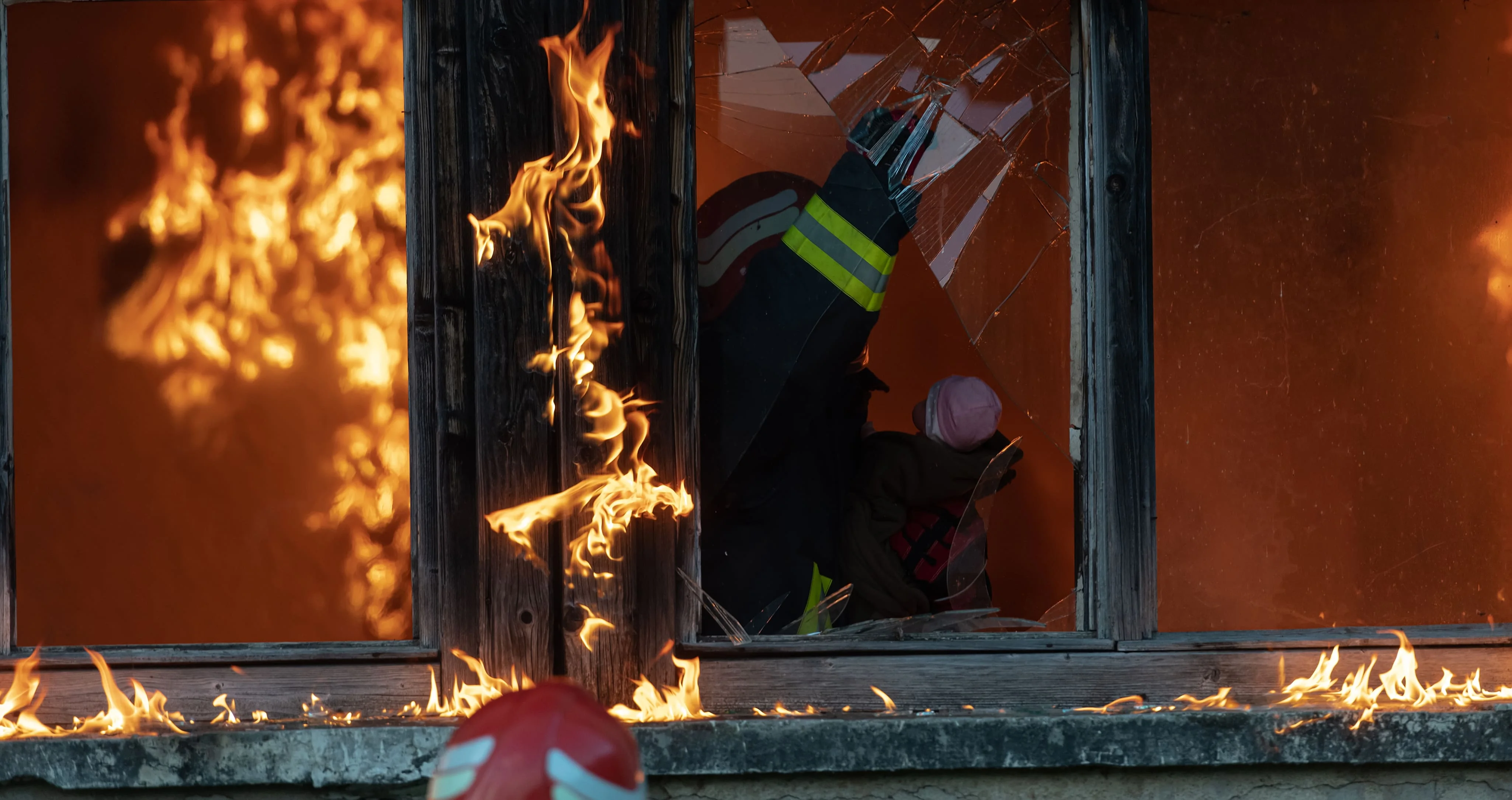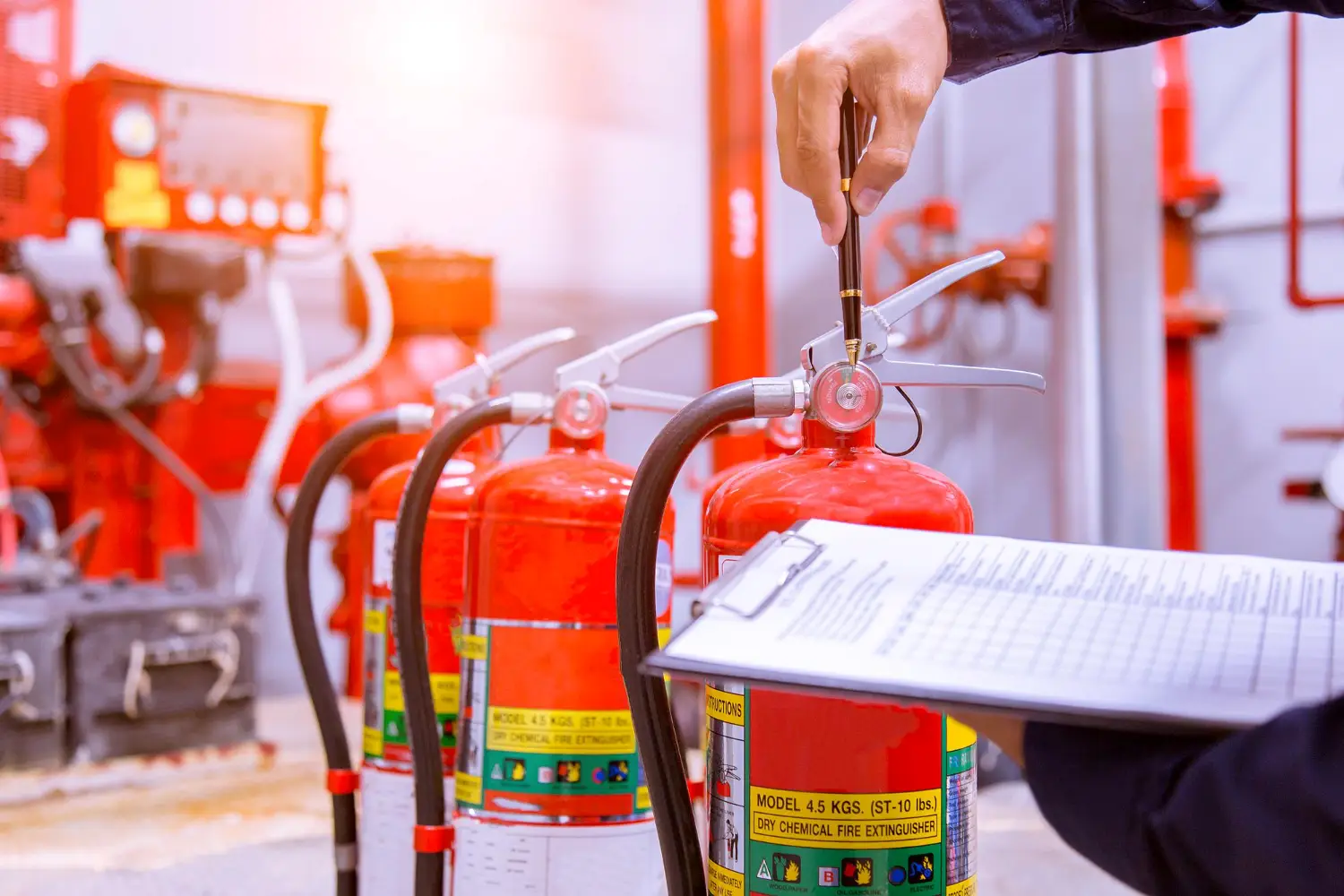Mastering Burn Patterns in Fire Investigation: A Comprehensive Guide

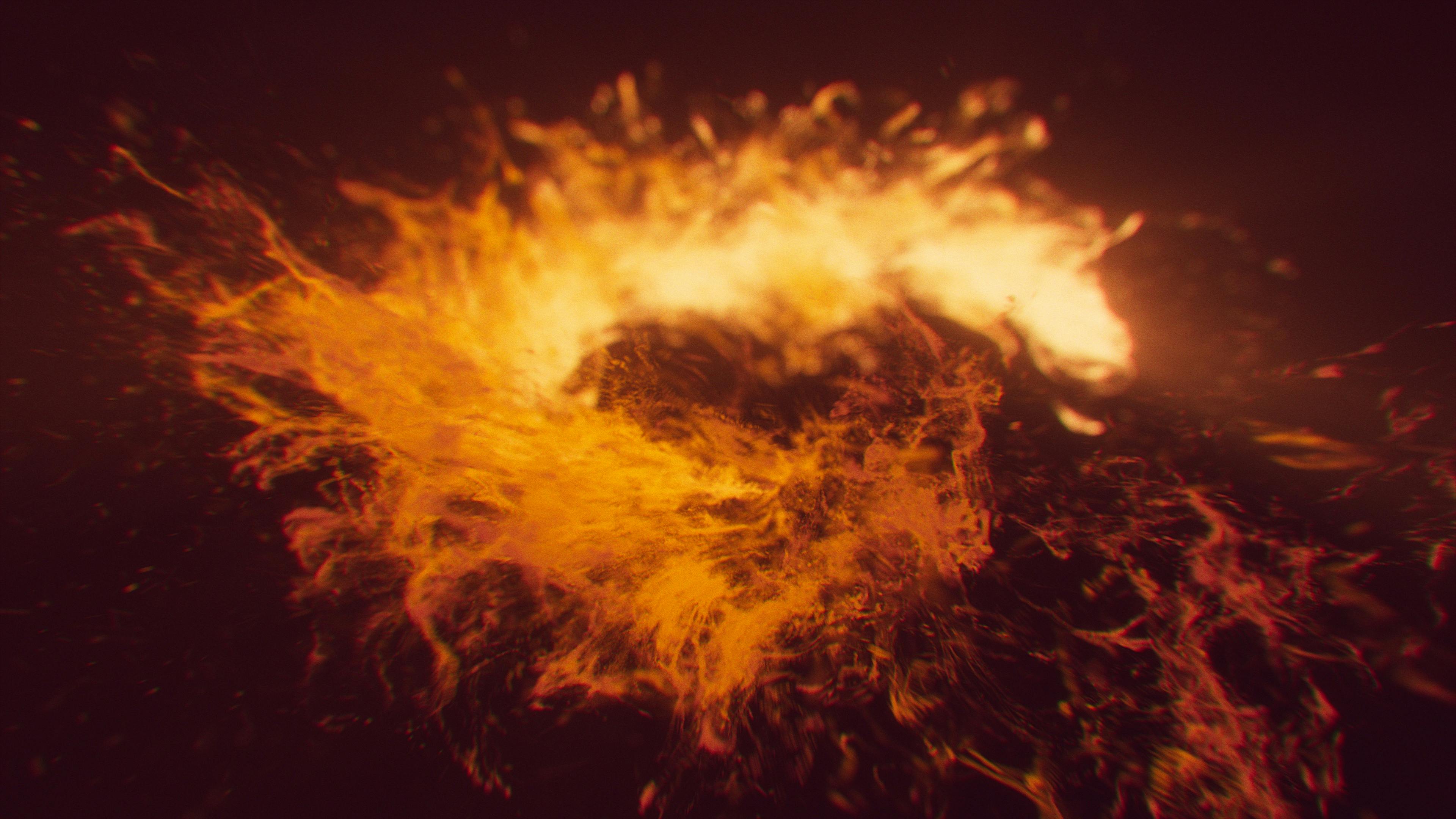
Mastering burn patterns in fire investigation is a complex science, requiring meticulous attention to detail, training, and skill to unlock the mystery behind a fire’s origin. In the simplest terms, burn patterns serve as a map, telling fire investigators where, when, and how a fire started. The insights provided by burn patterns fire investigation are among the most critical pieces of evidence obtained at the scene.
Here, we’re going to dive into the specifics of identifying and understanding burn patterns fire investigation, and how today’s technology is changing the landscape of the field.
Table of Contents
Identifying and analyzing burn patterns is one of the most important tasks for fire investigators in determining the origin and cause of a fire.
- There are multiple factors that can influence burn patterns, making it important for fire investigators to understand elements of fire science, chemistry, and physics as they relate to their field.
- Fire dynamics, ventilation, and fire suppression activities are just a few examples of potential influences on burn patterns.
- Today, fire investigators have a number of precise and accurate tools for helping to more efficiently analyze burn patterns.
- Blaze Stack is a leader in case management software solutions for fire investigations, allowing for more efficient and accurate investigation processes.
Definition and Importance
When a fire ignites and grows, it leaves behind visible markings called burn patterns. The size, shape, and characteristics of these patterns are important because they provide fire investigators with crucial details that help in determining the origin and cause of a fire.
There are multiple types of burn patterns, with each telling a different story about the fire’s roots and behaviors. This information is used, along with additional evidence collected at the scene to determine if a fire was caused intentionally, or what key factors were involved.
Fire pattern analysis is frequently used for insurance purposes, but can also play a key role in legal proceedings.
Historical Context
For decades, fire investigators have been required to lean heavily on their learned knowledge and personal experience to analyze burn patterns and trace the fire’s spread to determine the origin, and eventually the cause.
Because of the complexity involved, appropriate education and training in the field of fire investigation have been essential.
A survey from some years back revealed that 50% of fire investigators had a bachelor's degree or higher. Of those, only 18% were related to the fields of science and engineering. (National Center for Forensic Sciences)
Today, the field of fire investigation relies on science and engineering more than ever. However, this doesn’t mean that fire investigation requires an advanced degree. Modern investigators now have access to tools and advanced methodologies for analyzing burn patterns, including 3D modeling and advanced analytics tools.
V-Patterns
V-patterns are one of the most common types of burn patterns. These patterns get their name from the V shape that they form at the point of fire origin. When a fire ignites and burns upwards, it leaves behind a noticeable base, with markings that fan upwards, creating a V pattern.
Formation of V-Patterns
When a V pattern is discovered on a wall or other surface, its shape and characteristics provide reliable clues of a fire’s origin. V-shaped fire patterns can be noticed on vertical services.
Imagine a fire starting against a wall behind a stove.
At the point of origin, there will be a noticeable burn mark on the wall behind the stove. The marking is dark at the point of origin because at that point it hasn’t yet spread. Depending on the circumstances of the fire, the base of the V may be compact or spread out slightly.
As the fire grows, it spreads upwards and outwards, creating distinct angled lines. The dimensions of a V-shaped burn pattern provide multiple clues, not only about the origin but also the intensity of the fire and the distance from the surface to the igniting fuel source.
Interpreting V-Patterns
The base of a V-shaped fire pattern is a reliable indicator of a fire’s point of origin, however, this type of fire pattern tells the fire investigator other important clues.
Factors including ventilation, nearby obstacles, and whether or not fuel was involved at the point of origin, along with other details can be determined by the size, shape, and characteristics of a V-shaped char mark.
Hotter burning fires, such as those with a fire accelerant involved, tend to create narrower V marks, while a wider V indicates a slower burning fire. An extended base at the V could indicate that there was a pool, or puddle, of flammable substance at the point of origin.
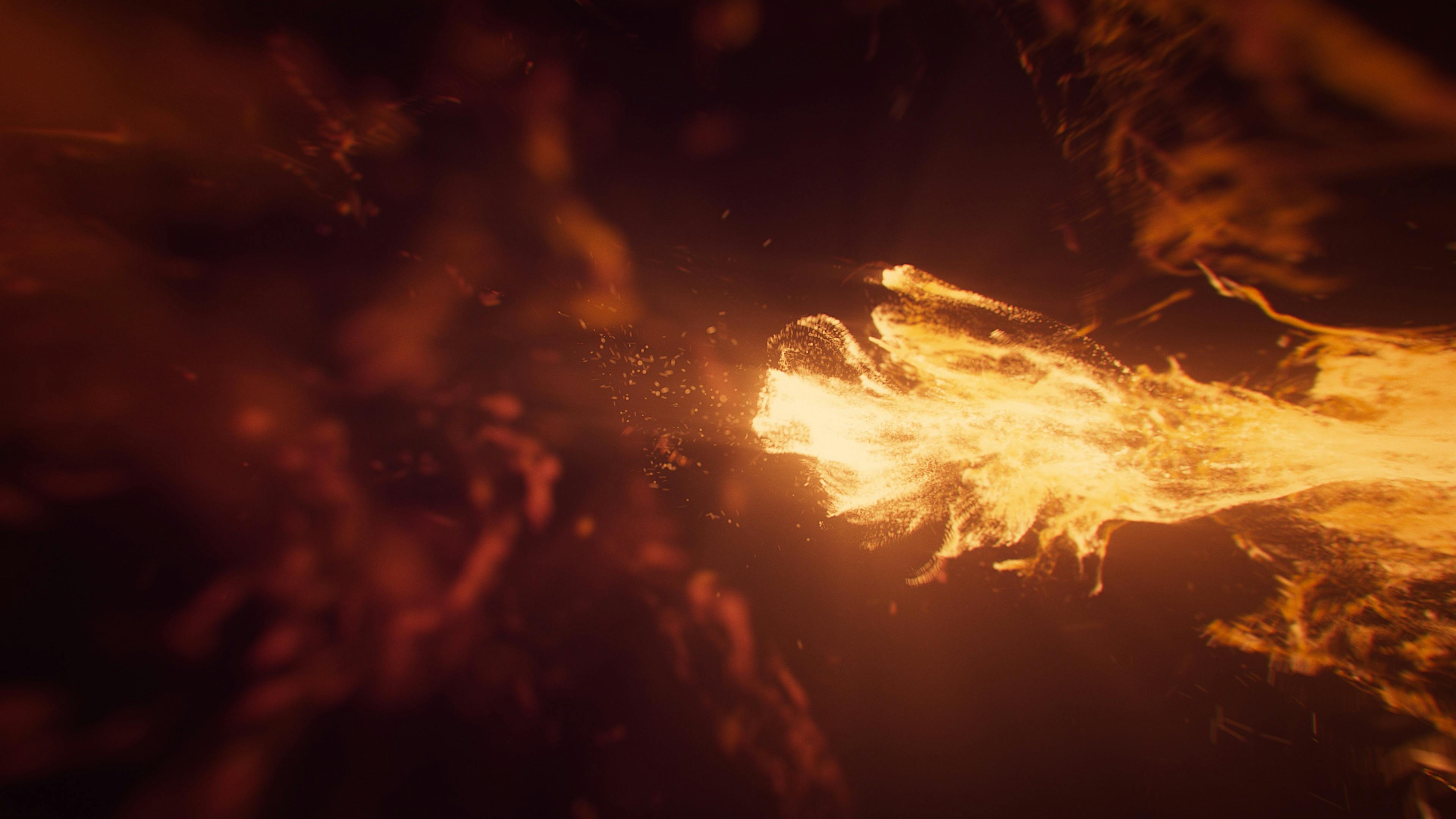
H-Patterns
H-patterns refer to burn marks that indicate a fire that has spread horizontally. Fire has a natural tendency to burn upwards, but when certain factors are present, there can be an area of horizontal spread. Analyzing an H burn pattern can provide clues to the fire’s progression.
Formation of H-Patterns
H patterns are generally formed due to airflow surrounding the fire or the nearby structural features that interfere with the typical upward progression. Certain chemicals that act as accelerants may also produce a horizontal burn pattern.
Interpreting H-Patterns
The interpretation of H-patterns can provide a fire investigator with clues regarding the fire’s direction and speed of spread. These factors may be influenced by airflow, how hot the fire burned, and whether certain accelerants were used. For example, a fire investigator will want to consider ventilation openings or structural barriers when there’s a presence of H-pattern at a fire scene.
Circular Patterns
Circle-shaped fire burn patterns are typically found on elevated surfaces, such as ceilings or upper support beams. The presence of a circular pattern is indicative of a fire plume. Think of a fire plume of hot gasses and flames rising, and leaving a circular mark on the uppermost surface that it touches.
Formation of Circular Patterns
Circular patterns form when hot gasses and flames hit the ceiling, spreading outwards in all directions. The center of the circular pattern often aligns with the fire's origin point below. Fire investigators can analyze circular patterns to determine the fire’s point of origin, based on the center-most point of the circle.
Interpreting Circular Patterns
In addition to identifying the point of origin of a fire, circular patterns can provide clues to the intensity of the fire and its progression. Circle patterns are just one element of how geometry is used in fire analysis.
It’s important to note that circular fire patterns on raised surfaces are different from circular patterns on the ground. On lower surfaces, the presence of a circular mark is likely to indicate structural obstacles that fire moved around.
Irregular Patterns
Not every fire will burn in predictable ways. The presence of accelerants, obstacles, or other complex elements can create a situation where fires leave unusual or irregular burn patterns on surfaces. In these complex situations, fire investigation burn patterns require an advanced level of analysis.
Irregular patterns are often caused by accelerants or complex fire dynamics. These patterns can indicate the use of accelerants or unusual fire behavior and require careful analysis.
Formation of Irregular Patterns
The formation of irregular patterns is a signal that there were influencing factors in the fire. For example, it’s not uncommon to find irregular patterns when a fire accelerant has been used. There may also be additional variables present that have contributed to irregular behaviors and patterns.
Interpreting Irregular Patterns
While irregular patterns can indicate the use of accelerants, this isn’t the only factor that a fire investigator needs to consider.
They also need to analyze the patterns for clues as to what type of accelerant was used and how it affected the fire’s behavior. As an example, pools of ignitable fluids, or wood that have been soaked in an accelerant can both produce irregular burn patterns.
Fire Dynamics
Fire dynamics is the study of how fires behave, with an emphasis on the chemistry of fire science and material science. This study of fire investigation is a crucial element for investigators to be able to accurately analyze and interpret the different types of burn patterns present at the scene of a fire.
Two of the most important elements of fire dynamics that fire investigators are concerned with include heat release rate (HRR) and flame spread.
Heat Release Rate (HRR)
The heat release rate (HRR) is a number that represents the intensity and spread of fire, serving as an important indicator of contributing factors of the fire. The HRR is essentially a measurement of the fire’s energy. If accelerants are used, this will accelerate the fire’s energy, leading to higher HRR.
The HRR is also important for helping fire investigators understand the potential for toxic exposure at the site.
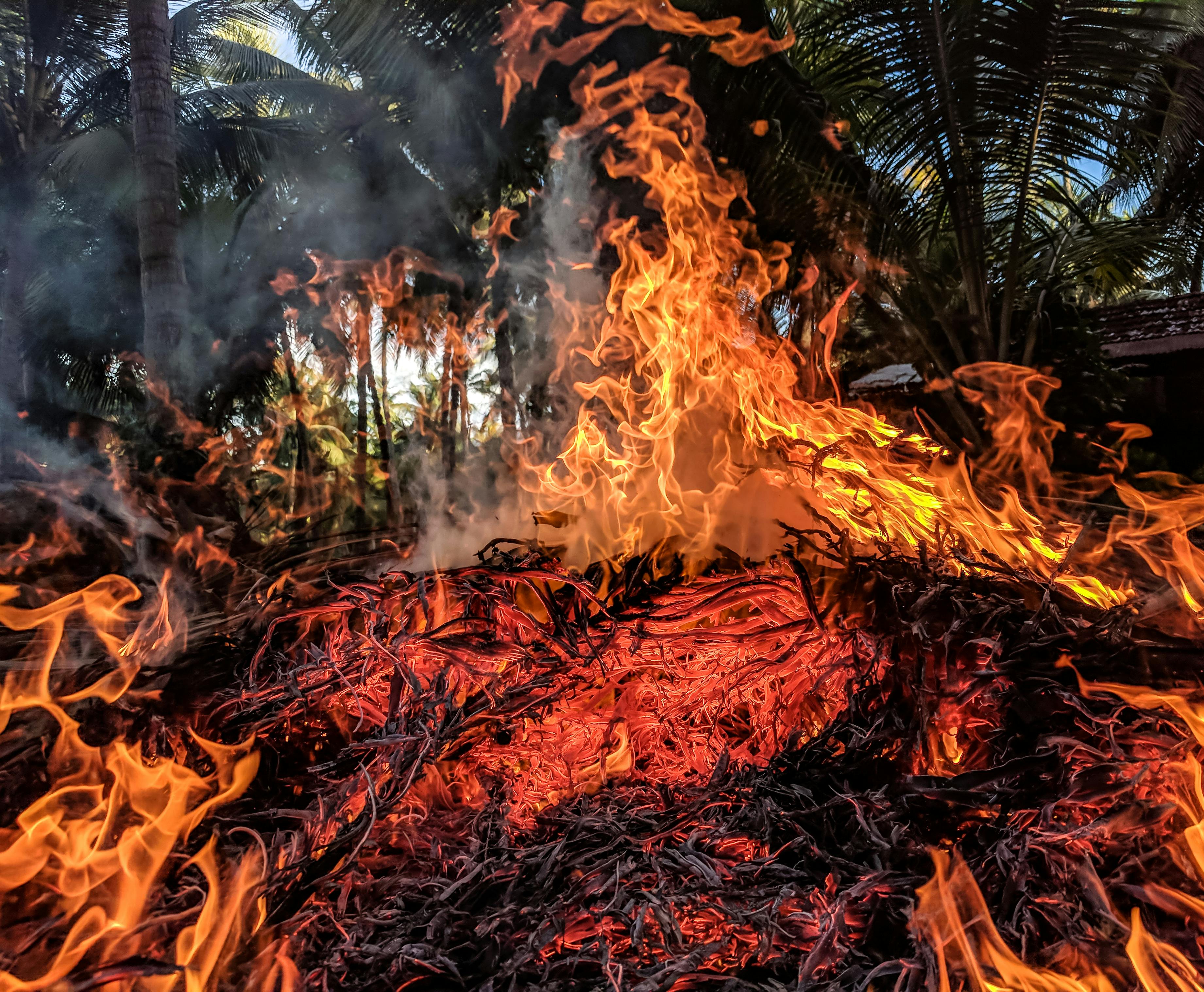
Flame Spread
Flame spread tells fire investigators important details about fire behavior. However, by analyzing flame spread, investigators are able to determine the direction and speed at which the flame spread.
This also includes analyzing various burn patterns to assist in forming a hypothesis of how the fire developed.
Ventilation Effects
Ventilation and the movement of airflow affect how a fire behaves and can influence the extent of damage. Fire responds differently when there is adequate ventilation and when there is not.
Take for example how a fire can be contained, but the act of a person trapped inside opening a door or window to escape and cause changes in intensity and erratic fire behaviors.
Fire investigators are tasked with assessing ventilation effects in burn patterns fire investigation.
Ventilation-Controlled Fires
Understanding the impact of ventilation on burn patterns can aid arson investigations. (National Institute of Justice) Focusing on how ventilation affects fire behavior has become an increasingly important area of focus in fire investigation.
In the case of ventilation-controlled fires, we see very distinct burn patterns near the ventilation openings. Fire is naturally drawn to sources of ventilation, so we’re more likely to see more noticeable and intense burn patterns toward these sources.
When ventilation is controlled, the fire is more easily contained, and burn patterns are more likely to indicate that the fire behaved in a normal way, with the exception of accelerants or other defining factors.
Ventilation-Generated Patterns
Fire spreads more quickly and intensely in well-ventilated areas. In the case of structural fires, well-ventilated rooms are most likely to be severely damaged. Fire feeds off of ventilation, and a thorough fire damage assessment of burn patterns will indicate exactly where the primary areas of ventilation and airflow were located.
Suppression Activities
Fire investigators need to take into consideration the effect of fire suppression activities on burn patterns. Fire suppression significantly impacts how a fire behaves and alters typical burn patterns. In some cases, fire suppression may cause the fire to create new, irregular burn patterns or obscure the initial burn marks.
Water Application
At the surface, burn patterns are char marks. Water, especially at the volume and force used for fire suppression can alter the presence of burn patterns, or make them more difficult to detect during the investigation process.
Fire investigators may need to look for additional clues about the fire’s origin and behavior, including other color changes, oxidation, melting, and distortion, for analysis.
Physical Disruption
When firefighters are at the scene, their concern isn’t on the preservation of evidence, but instead on extinguishing the fire to save lives and damage. There is often physical disruption at the scene of a fire that can compromise or destroy evidence, including the integrity of burn patterns.
Observation Techniques
One of the best tools that a fire investigator has for analyzing fire burn patterns is their skillset of observational techniques. Above all else, it’s the ability to observe, discern, analyze, and record observations of burn patterns that form the foundation of a thorough and accurate fire investigation. Visual inspection and photographic documentation are the two primary methods of observation.
Effective observation techniques are essential for identifying and interpreting burn patterns. Proper observation methods help ensure accurate analysis and documentation of burn patterns.
Visual Inspection
A thorough visual inspection of the fire scene is one of the first and most important actions by the fire investigator. During the visual inspection, investigators look for key areas of interest, including burn patterns. The initial identification of the types of burn patterns, their details, and variations help to provide direction in the investigation.
Photographic Documentation
High-quality photographic documentation of burn patterns is essential for analyzing and determining the cause of the fire. High-quality photography can pick up on details that may not be discernible with the naked eye and can capture the details of burn patterns from multiple angles and distances.
Photographs also provide highly accurate documentation should they need to be used for legal purposes.
Documentation and Recording
Fire investigator's main role is to determine the cause of a fire, but they also serve as key witnesses and provide testimony when evidence is used for insurance and legal purposes. Due to the highly detailed nature of the investigation and analyzing burn patterns, investigators must provide detailed documentation of the recording of evidence.
Field Notes
Field notes are recordings of the detailed observations made by a fire investigator at the scene of the fire. When analyzing burn patterns at the scene, an investigator needs to make detailed observations, including making notes of measurements and defining characteristics to help with their initial hypothesis.
Field notes are considered viable evidence, and as such, need to be extremely thorough, detailed, and organized.
Digital Tools
Fire investigators today have access to a number of modern digital tools that allow them to perform the tasks of their job with greater precision, efficiency, and accuracy.
An example is how specialized software allows investigators to record data about the fire scene and key details, including burn patterns, in real-time. These, and other types of arson investigation tools and equipment, have revolutionized the field of fire investigation.
Interpreting Burn Patterns
After burn patterns have been identified, the fire investigator must analyze their presence and details to form a hypothesis of the fire’s origin and likely cause. Analytical burn patterns fire investigation is a skill that is part science, part technical knowledge, and part skill earned from practical hands-on experience.
When interpreting burn patterns, investigators consider attributes including pattern analysis and contextual factors.
Pattern Analysis
Burn pattern analysis is an important step as it assists in helping fire investigators reconstruct the scene and the fire’s progression. Details, such as the location, shape, and size of burn patterns can indicate the origin, cause, and contributing factors to the spread and severity of fire damage.
Contextual Factors
Burn pattern analysis is never a cut-and-dry science. There are contributing factors that affect burn patterns and the information they contain. Fire investigators must take into consideration details such as the layout of the structure, ventilation, and the types of materials involved – including their flammability and how they influence fire behavior.
For example, an area of a structure where ignitable liquids were contained is going to significantly influence fire behavior, regardless of the point of origin of the fire. The same is true for ventilation, and how it can affect fire behavior and the evidence that is left behind in the form of burn patterns.
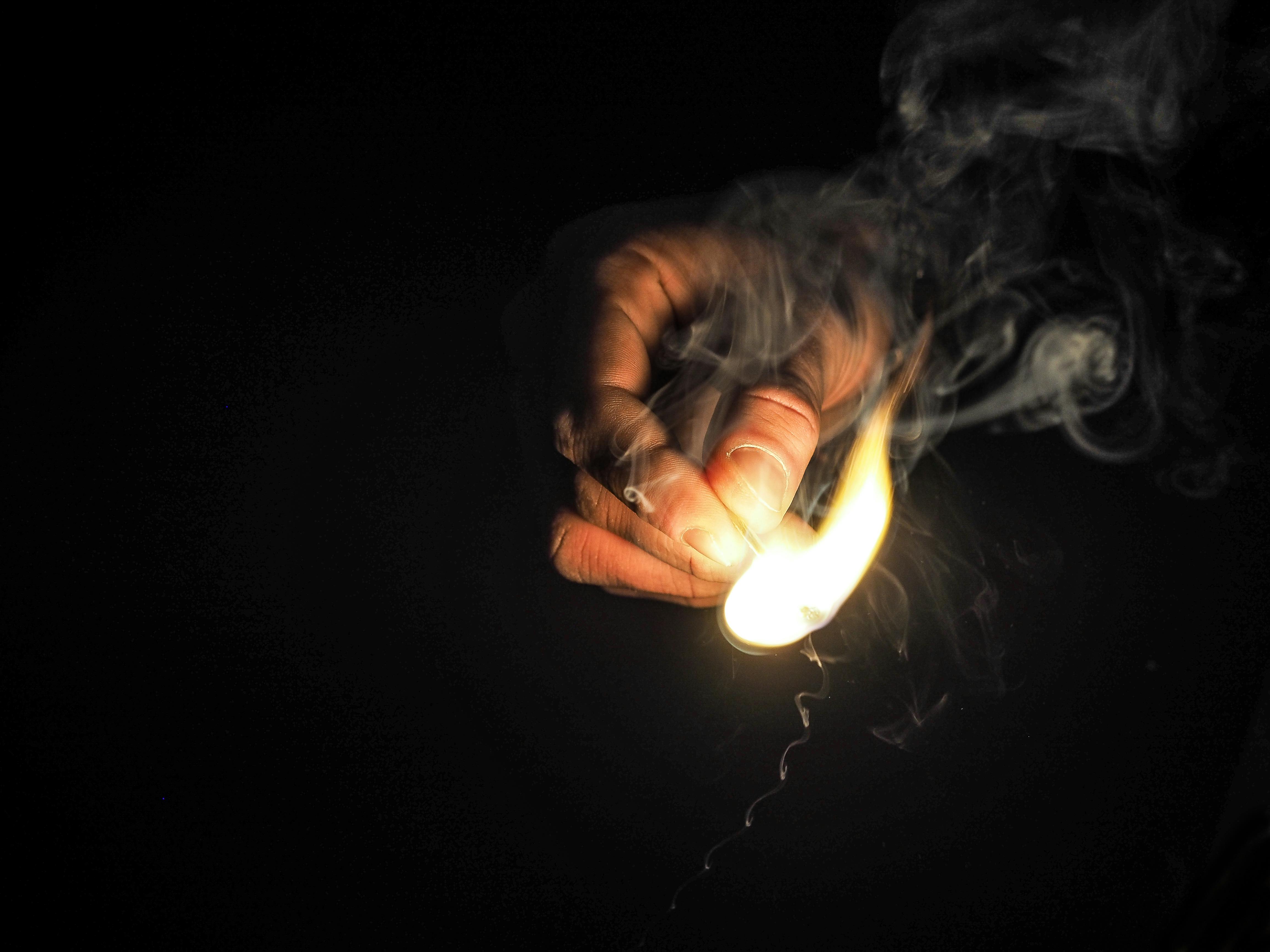
Post-Flashover Conditions
Fire investigators face multiple challenges with burn pattern analysis, including post-flashover conditions that have a strong tendency to, at the very least, significantly alter fire investigation burn patterns.
In many cases, flashover conditions can obscure them entirely, creating unique and difficult challenges in identification and analysis.
During flashover, the temperature of the fire rises to the point where burn patterns are generated faster than they were in pre-flashover conditions. Post-flashover burn patterns can be misleading, providing challenges for fire investigators in determining the true origin and cause.
Uniform Burning
With flashover conditions, uniform burning is common. Uniform burning is counterproductive to the uneven burning that takes place in pre-flashover conditions. It’s the uneven burning that provides clues to the cause, origin, and contributing factors.
Flashover conditions have the potential to mask original burn patterns. Fire investigators must be able to distinguish between pre and post-flashover burn patterns and damage.
Heat Damage
Extreme heat is an obvious challenge with fire analysis. Heat destroys, and the hotter and faster burning the fire, the more destructive it becomes. Evidence can be destroyed by heat and the fire itself, which is something that fire investigators must account for and take into consideration when performing their analysis of burn patterns and forming their hypothesis.
Environmental Factors
Mother nature plays a role in fire investigation and the analysis of burn patterns. Environmental factors such as wind, rain, and natural disasters can influence burn patterns and make them less predictable and indicative of fire origin. Here’s a look into how environmental factors influence burn patterns fire investigation.
Wind Effects
Of all environmental factors that can influence burn pattern analysis, the effects of wind are arguably the most significant. Wind can significantly change fire behavior, causing it to change direction and build in intensity. These are two factors that can alter typical burn patterns and are important for fire investigators to consider during their analysis.
Weather Conditions
Other environmental and weather conditions can alter the formation of burn patterns. This is typically to a lesser extent than noticeable wind, but still not insignificant. Heavy rainfall can affect the intensity and growth of fires while presenting unique challenges to burn pattern analysis.
In contrast to high wind situations, humidity, and stagnant air can slow fire progression, leading to a more even and predictable burn. This can create challenges in identifying original burn patterns and analyzing what existing burn patterns mean.
Notable Cases
Fire investigators are often called upon to provide testimony in legal cases regarding the origin of a fire. In most cases, the reason is to deliver testimony in a suspected arson case. It’s the fire investigator’s collection and analysis of burn patterns and other evidence at the scene that can provide critical evidence in such cases.
A fire investigator’s accuracy in collecting and analyzing evidence can have a significant impact on the lives of others. Here, we look at a couple of real-world applications that prove this point.
Lone Star Guns Case
The Lone Star Guns case offers us a prime example of how misinterpretation of burn patterns can lead to someone being potentially falsely accused of arson.
In this case, a gun shop in Texas burned down on August 21, 2004. The gun owner, who was over an hour away from the location when the fire began, was eventually charged and imprisoned for arson. Fire investigators determined there were three points of origin, which is something that is not seen with unintentionally started fires.
You can read more about this case in the article "Curtis Severns is serving 27 years for an arson he almost certainly didn't commit. Sloppy fire science put him there." (Texas Observer). However, to summarize, fire experts now believe that Mr. Severns is innocent.
After reviewing the information, arson experts believe that the fire had a single, electrical point of origin and that the appearance of multiple points of origin was caused by a case of nearby aerosol cans that had exploded.
Warren Tech Investigation
How do fire investigators get hands-on training when entering or in the early stages of their career in the field? Events like the annual Fire and Arson Investigation burn held on May 1st, 2023 at the Warren Tech Central Campus in Lakewood offer a prime opportunity for experience and skill growth. (5280 Fire)
Events like these aim to provide real-life learning experiences for firefighters and fire investigators. The hands-on experience is invaluable for training fire investigators in handling the more complex areas of burn pattern analysis and evidence collection.
The annual Warren Tech Investigation event provides hands-on training for students in interpreting burn patterns. This event involves constructing and burning structures to create real-world scenarios for analysis.
Learning from Experience
Analyzing past case studies and experiences is key to skill development for fire investigators. Learning from the past allows those in the field to more easily identify complexities, and common areas where mistakes and inaccurate analysis are made.
Additionally, case studies are a good reference source for developing a standard of best practices in the identification and analysis of burn patterns.
Lessons Learned
Reviewing past cases and identifying mistakes helps to guide future fire investigations. The more we learn from the past, the better we’re able to perform in the future. The above case of the gun shop is a prime example of this. After reviewing this case and identifying gaps in analysis, fire investigators are able to carry that information with them into the future to avoid making the same mistakes.
Best Practices
The standard of best practices in fire investigation is always evolving. References past cases and focusing on new training is a combined approach that allows both those new to the field of fire investigation and those who are experienced to operate based on established evidence-based standard procedures. Having established best practices is central to consistency in fire investigator performance.
Digital Tools and Software
The advancement of digital tools and software has become central to the field of burn patterns fire investigation. These tools, which include 3D modeling and data analysis tools, allow fire and arson investigators to perform their jobs with more precision and accuracy, especially related to burn pattern documentation and analysis.
3D Modeling
3D modeling software is capable of capturing millions of minute details, many of which are easily missed or potentially invisible to the human eye. 3D modeling software creates minutely detailed three-dimensional representations of fire scenes in an investigation.
Not only does this type of software pick up on details that might otherwise be missed, but it also assists in the visualization of spatial relationships and how the fire spread through the area, providing a significant advantage to fire and arson investigators at the scene.
Data Analysis Software
Fire investigators collect large amounts of data at fire scenes, and managing and effectively analyzing this type of data overload can become challenging without the proper tools to help. Advanced data analysis software accomplishes more than simple data collection and organization, it also provides comprehensive insights that can be used in an investigation.
As an example, data analysis software can help to identify patterns and correlate multiple data points. Data analysis software doesn’t replace the work of fire investigators, but it’s an essential tool for enhancing accuracy and data management.
Simulation and Modeling
An important element in ongoing training for fire investigators is learning more about fire behavior and resulting burn patterns. Fire simulations and modeling techniques provide a better understanding of behavior and allow for the opportunity to practice predicting fire behaviors in a range of different scenarios.
Fire dynamics simulators (FDS) and computer-aided design (CAD) are two types of simulation and modeling tools that can help.
Fire Dynamics Simulator (FDS)
One way for fire investigators to reconstruct a fire scene, either for the purpose of investigation or training, is with a fire dynamics simulator (FDS). This is a computational tool that simulates various elements of fire dynamics, including heat and smoke, in a 3-dimensional format.
The type of simulation provided through FDS helps fire investigators better understand burn patterns as they relate to the dynamics of a specific scenario.
Computer-Aided Design (CAD)
With CAD software, fire investigators are able to create precision-focused models of fire scenes. CAD is useful in the field of fire investigation as it can provide highly detailed representations of the entire scene. This includes basic details such as building structure, and more minute details that are critical to determining origin and cause.
For example, including models of the structure content and details of burn patterns, provides important details about how the fire behaved, and what type of factors may have influenced behavior, including ignitables and ventilation sources. ,
Features and Benefits
When researching solutions for fire investigation case management, it’s important to look for comprehensive features that streamline fire investigations, leading to more efficient and accurate data collection from burn patterns and other evidence, analysis, and reporting. Blaze Stack offers fire investigation solutions that simplify every aspect of fire investigation, including data collection and storage, report generation, and case management.
Here’s a look at how Blaze Stack improves accuracy and stands out from other similar tools on the market.
Data Collection and Storage
Blaze Stack data collection and storage tools provide one central, cloud-based location for collection, storing, and organizing data collected at the scene of a fire. These tools work with various types of data collection methods, including photos and videos taken with mobile devices, along with notes taken in real-time at the scene.
Our data collection and storage tools improve the accuracy and efficiency of the fire investigation process. The centralized location means that data is accessible to all stakeholders in the investigation process for smoother collaboration between the various levels of the fire investigation team. This ensures evidence integrity is not compromised in the investigation process.
Report Generation
Automatically generated reports significantly streamline the process for fire investigators and also eliminate the potential for human error in report generation. Blaze Stack’s report-generating tools are in full compliance with NFPA 921 standards.
Examples of details included in reports include fire scene specific, burn patterns, witness statements, and any other key information that is pertinent to the investigation.
Case Management and Collaboration
The integrity of fire investigations extends beyond what happens at the scene with evidence collection and burn patterns analysis. The ability to effectively manage fire investigation cases and have smooth collaboration among stakeholders is essential.
Blaze Stack enhances case management in a number of important ways. For example, this software manages the evidence retention schedule and the chain of custody, both of which are key for protecting the integrity of evidence when used in legal proceedings.
Online collaboration and review help to facilitate collaboration, while streamlining workflows for all departments involved.
Collaborative Tools
There are often many hands and players involved in a fire investigation case. It’s important that any software used is capable of supporting a collaborative approach to case management.
With multiple fire experts, investigators, and others contributing to a case, collaborative tools allow all parties to share and contribute their expertise in an efficient manner, which leads to more accurate hypotheses and more thorough fire scene investigations.
Task Management
There are a number of critical steps and tasks involved in a thorough fire investigation. Each task needs to be assigned, managed and tracked to ensure that every aspect of the fire investigation is not only tended to, but also that it is completed to standards.
With so many tasks and multiple players in the workflow, task management is absolutely essential in fire investigation. Check out our About Us page to learn more about our task management tools and how we’ve designed our solutions to support fire investigators.
Future Directions
At Blaze Stack, we supply top-of-the-line fire investigation case management software. However, we’re not satisfied with staying where we are. We’re continually looking for ways to improve our software solutions based on user feedback and incorporate new features that lend to more streamlined, efficient, and accurate fire investigations.
Our current capabilities, combined with our commitment to improvement make Blaze Stack an indispensable tool for fire investigators.
Upcoming Features
What do we at Blaze Stack have in our plans for the future? We’re currently in plans to introduce new, advanced features to our case management software solutions/ These include highly-tuned real-time collaboration tools and advanced analytics that outpace anything currently available.
With our planned future enhancements, fire investigators will have even more powerful tools at their disposal, for analyzing every detail of a fire scene, identifying patterns, and taking all of this data and using it to produce hypotheses and conclusions that are accurate and stand up in legal proceedings.
User Feedback
At Blaze Stack, we’re often asked how we prioritize where we work to evolve and elevate our offerings. The answer lies in user feedback. This is our number one tool for understanding how we can grow and evolve to meet the changing needs of fire investigation.
Based on user feedback, we’re committed to providing regular updates and improvements that continue to keep Blaze Stack at the top of the field in fire investigation case management software.
In this comprehensive guide, we dove deep into the complexities and the importance of burn patterns in fire investigation. For fire investigators, understanding how to identify, interpret, and analyze burn patterns is one of the most important elements of the job.
Today, there are a number of exceptional tools that can assist fire investigators in using burn patterns to determine a fire’s origin and cause. This includes tools that are able to more accurately interpret the unique characteristics of burn patterns, due to elements such as fire dynamics, suppression, and ventilation.
Blaze Stack offers a comprehensive software solution for managing data related to fire investigation. With Blaze Stack tools, fire investigators are able to accurately and safely collect, store, and organize data while facilitating smooth collaboration throughout the workflow of the investigation. Tools like these are exactly what fire investigators need to ensure accuracy from beginning to end.
One of the most critical skills for fire investigators is mastering burn pattern analysis. Each burn pattern tells a story about how, where, and why a fire began, along with key information about fire behavior and factors that influenced it.
Accurate analysis of burn patterns is essential. Incorrect or incomplete analysis can have far-reaching effects on the lives of others. Each detail of fire investigation and burn pattern analysis matters, and Blaze Stack is here to help ensure the accuracy and integrity of every piece of evidence.
Blaze Stack is a leader in providing comprehensive solutions for fire investigators for complete case management. To learn more about our fire investigation case management solutions, reach out to us at blazestack.com for more information.
Trusted by Public and Private Investigator Teams Everywhere
Whether you're a big state agency, a small local fire department or somewhere in between, Blazestack software (NFPA 921® & CJIS compliant) collects fire scene data and generates standardized origin and cause reports in a fraction of the time of other methods.
To learn more about Blazestack, give us a call at (866) 303-4344 or email us at support@blazestack.com
Get Your Free 14-Day Trial and Custom Price Quote Now
We'll let Blazestack do the talking. Try it out right now for free.
A member of our staff will be in touch shortly.

